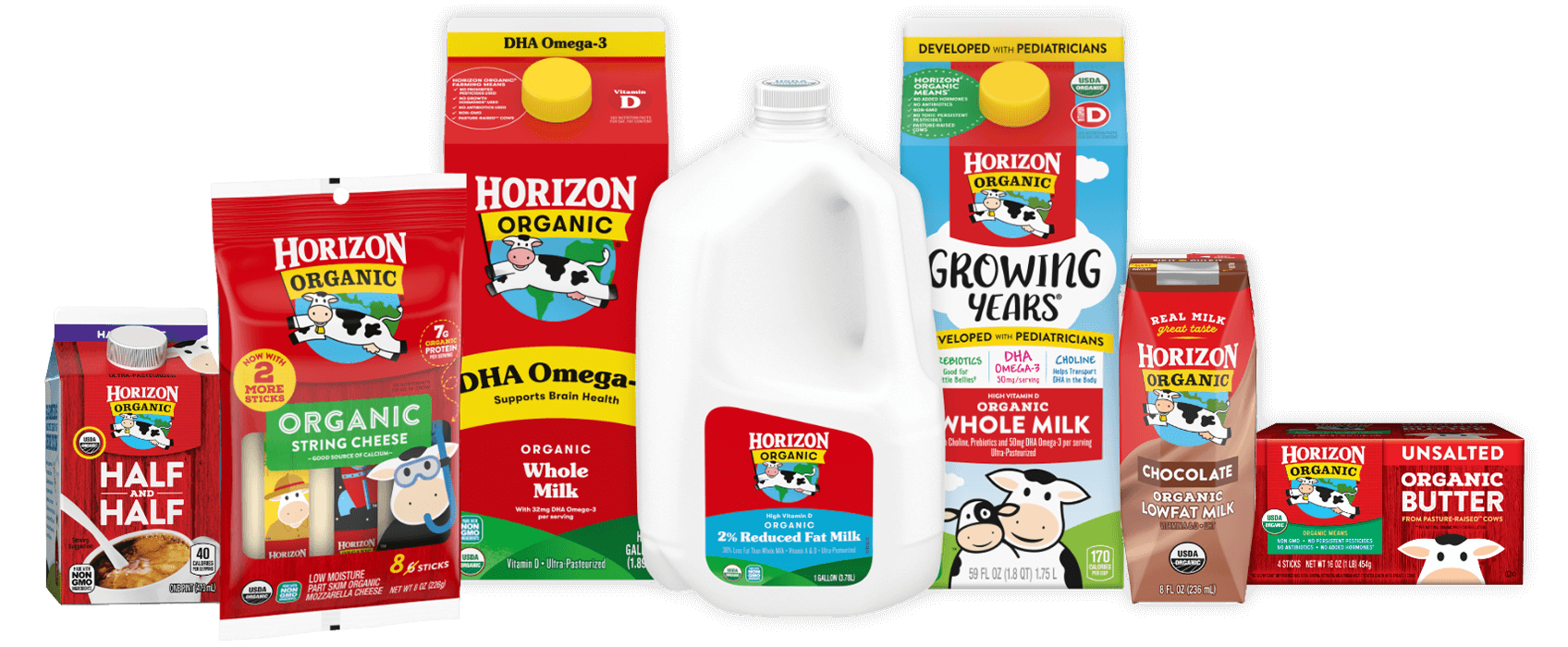

We know how important proper nutrition is during childhood. Offering a wide variety of nutrients, dairy products are an easy way to help young children get high-quality protein, vitamin D, calcium, and as pediatricians note, a fat that can serve as an energy source including for rapidly growing brains.
Developed with pediatricians, Growing Years® Organic Milk offer the goodness of dairy, along with a special bundle of added key nutrients: DHA Omega-3, choline, and prebiotics. Let’s take a look at why these nutrients are so important.

While our bodies can make a small amount of the fatty acid DHA, the process is not very efficient. DHA is best consumed through foods and dietary supplements. Common food sources of DHA include seafoods, such as salmon, mackerel, and tuna, as well as certain types of algae.
Currently, the FDA has not established a daily recommended amount of DHA. However, some important agencies have suggested minimum daily amounts for different ages. According to the Food and Agriculture Organization (FAO) of the United Nations, the following recommendations have been made:

According to What We Eat in America, NHANES 2015-2016 data, children aged 2 to 5 years consume an average of 20mg of DHA per day and children aged 6 to 11 years consume 30mg of DHA per day.
DHA is important to help support brain health but can be hard to get into kids’ everyday diets. A one-cup serving of Growing Years milk contains 50mg of DHA.
How does DHA get to the brain? That’s why Growing Years products also contain choline.
Sometimes categorized as one of the B-complex vitamins, choline is involved in many processes in the body. Much like a delivery truck, choline plays a role in helping to bring DHA to the brain, so this important fatty acid can then be incorporated into brain cell membranes.
Our bodies can make choline, but not in adequate amounts, which means it must be consumed in food or supplements. Both animal and plant food sources contain choline, including eggs, beef, chicken, and soybeans, among many others. According to the Institute of Medicine, the daily adequate intake for choline in young children is:
Every serving of Growing Years milk contains a good source of choline.

According to the International Scientific Association for Probiotics and Prebiotics (ISAPP), a prebiotic is defined as “a substrate that is selectively utilized by host microorganisms conferring a health benefit.”
This is a fancy way of saying certain compounds act as food to “feed” the good bacteria in the gut to promote their growth. Increasing the growth of the beneficial gut bacteria can then lead to a health benefit to us (their host). A prebiotic substrate can include certain types of dietary fibers, as well as other non-carbohydrate compounds.

A prebiotic is different than a probiotic, which is defined by ISAPP as a live and specific microorganism that leads to a benefit in the host when given in adequate amounts.
Derived from chicory root, the prebiotics used in Growing Years® products come from inulin, which is a type of dietary fiber. As dietary fiber, the inulin counts toward total fiber intake for the day. From the Institute of Medicine, the daily adequate intake for fiber in young children is:
However, according to data from What We Eat in America, NHANES 2015-2016, many young children on average consume just above half of these recommendations. The data reports that the average daily fiber consumption is 12.1g per day for boys 2-5 years and 11g per day for girls 2-5 years. For slightly older children, the average fiber intake is 14.7g per day for boys 6-11 and 14g per day for girls 6-11 years.
Growing Years whole and reduced fat milk each contain 1g of prebiotics per one-cup serving.
All Parent Resources
Our farmers roll up their (flannel) sleeves and go the extra mile.

We’re always thinking about how we can make life better for our cows.

We’re cutting our carbon footprint and finding smarter ways to farm.

